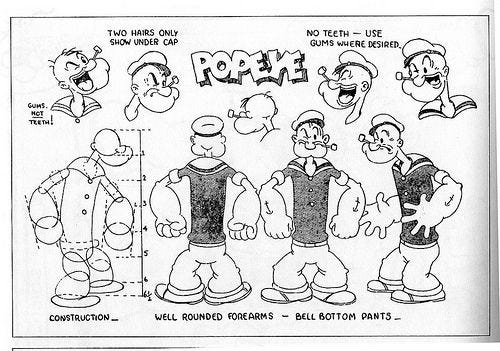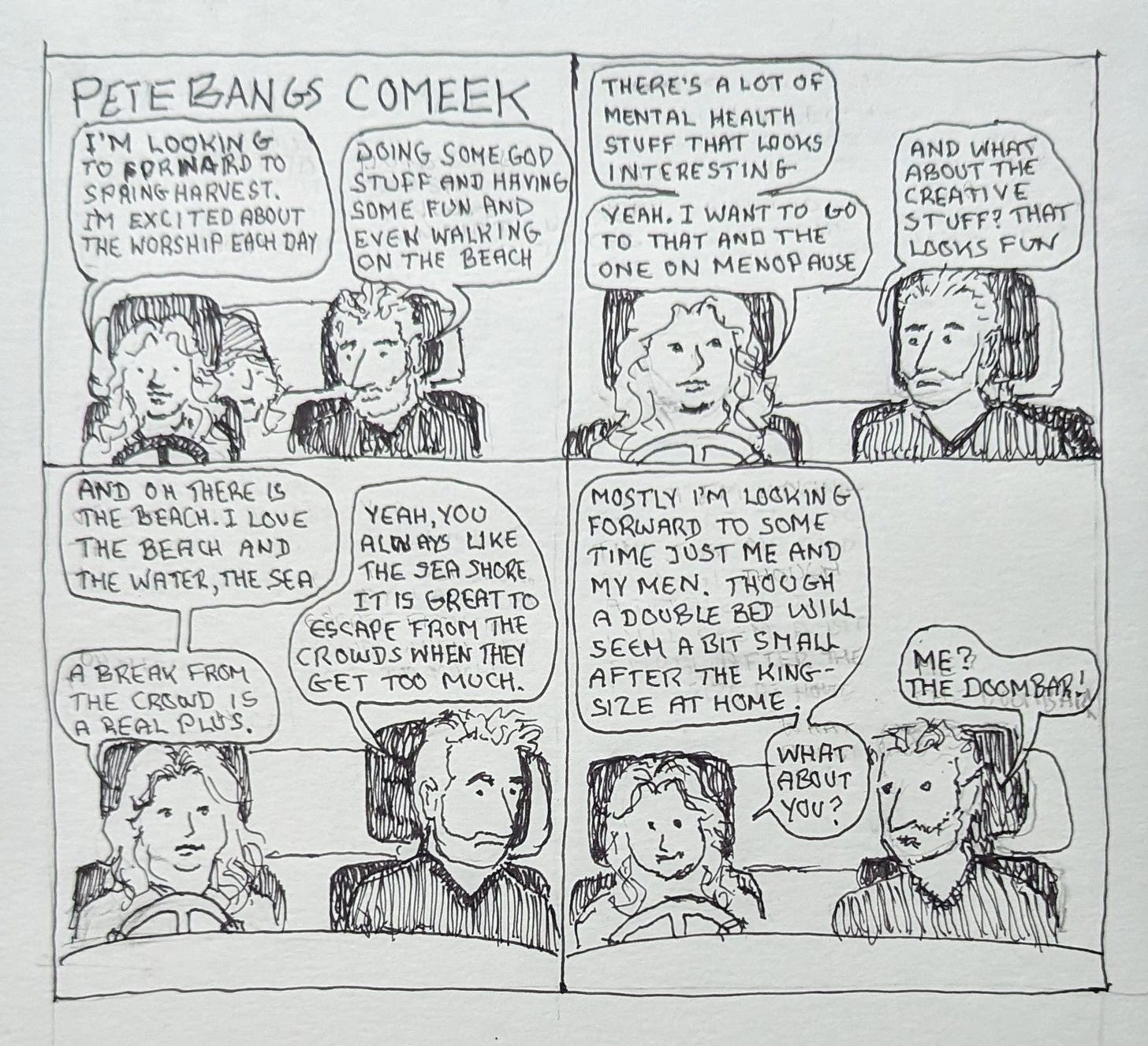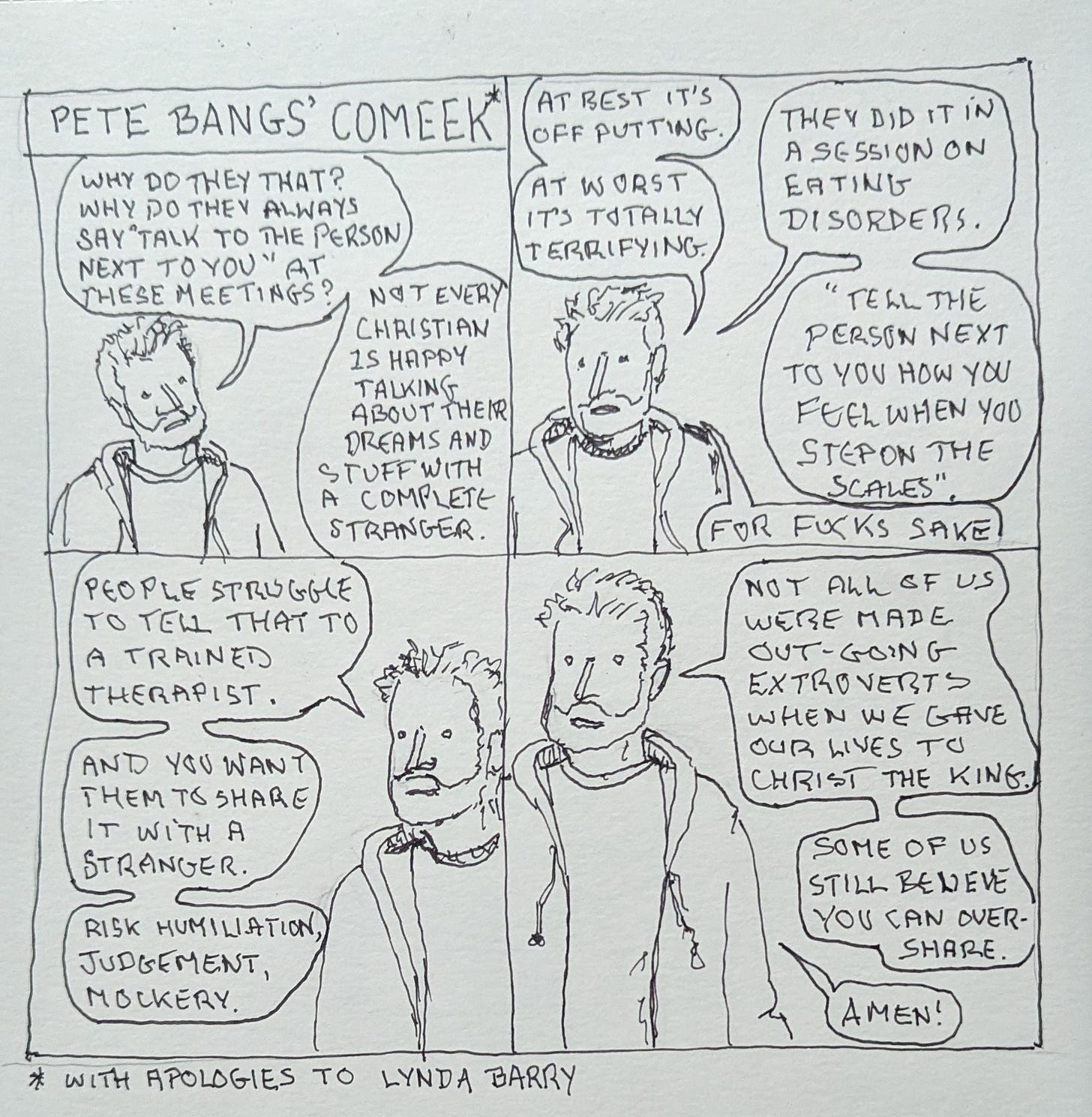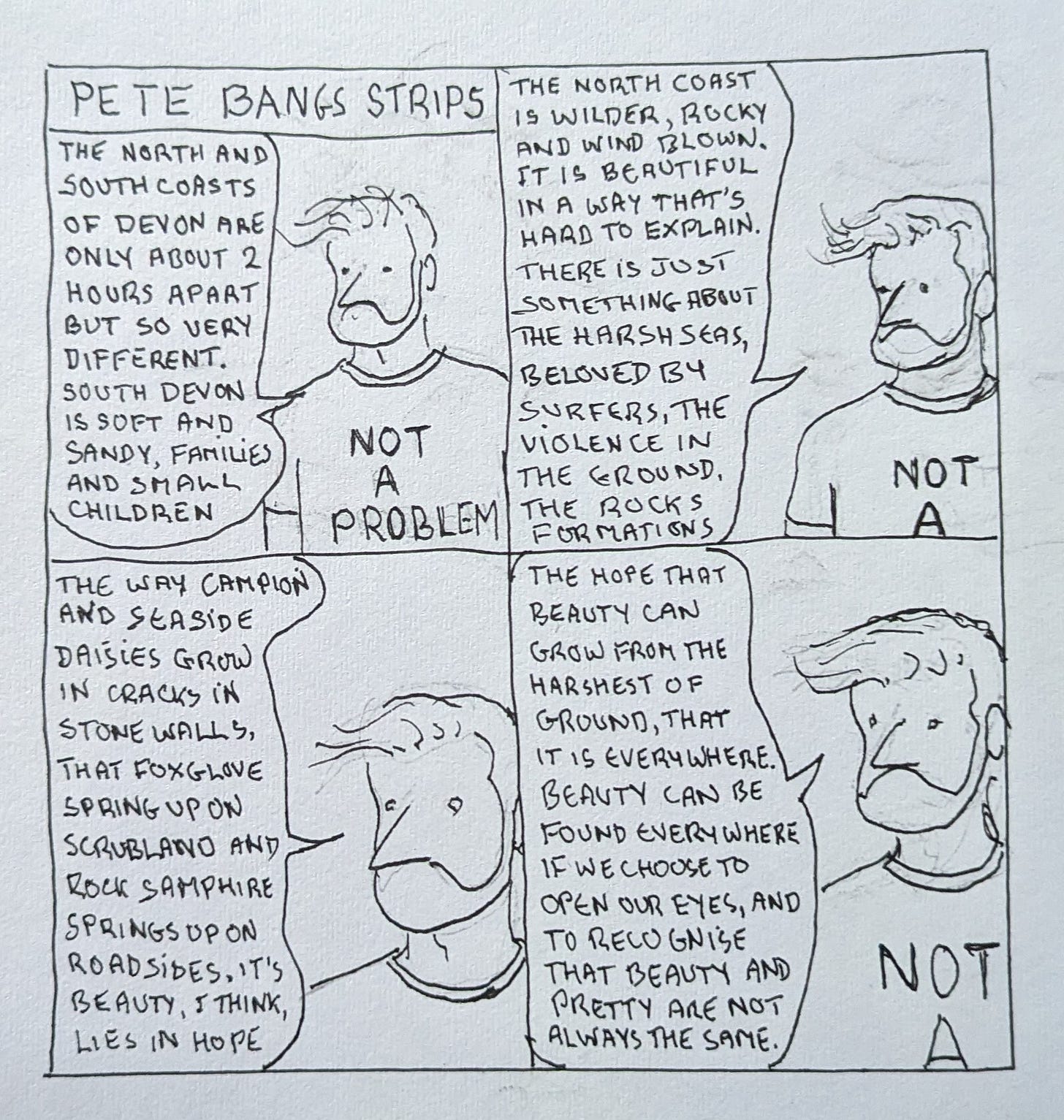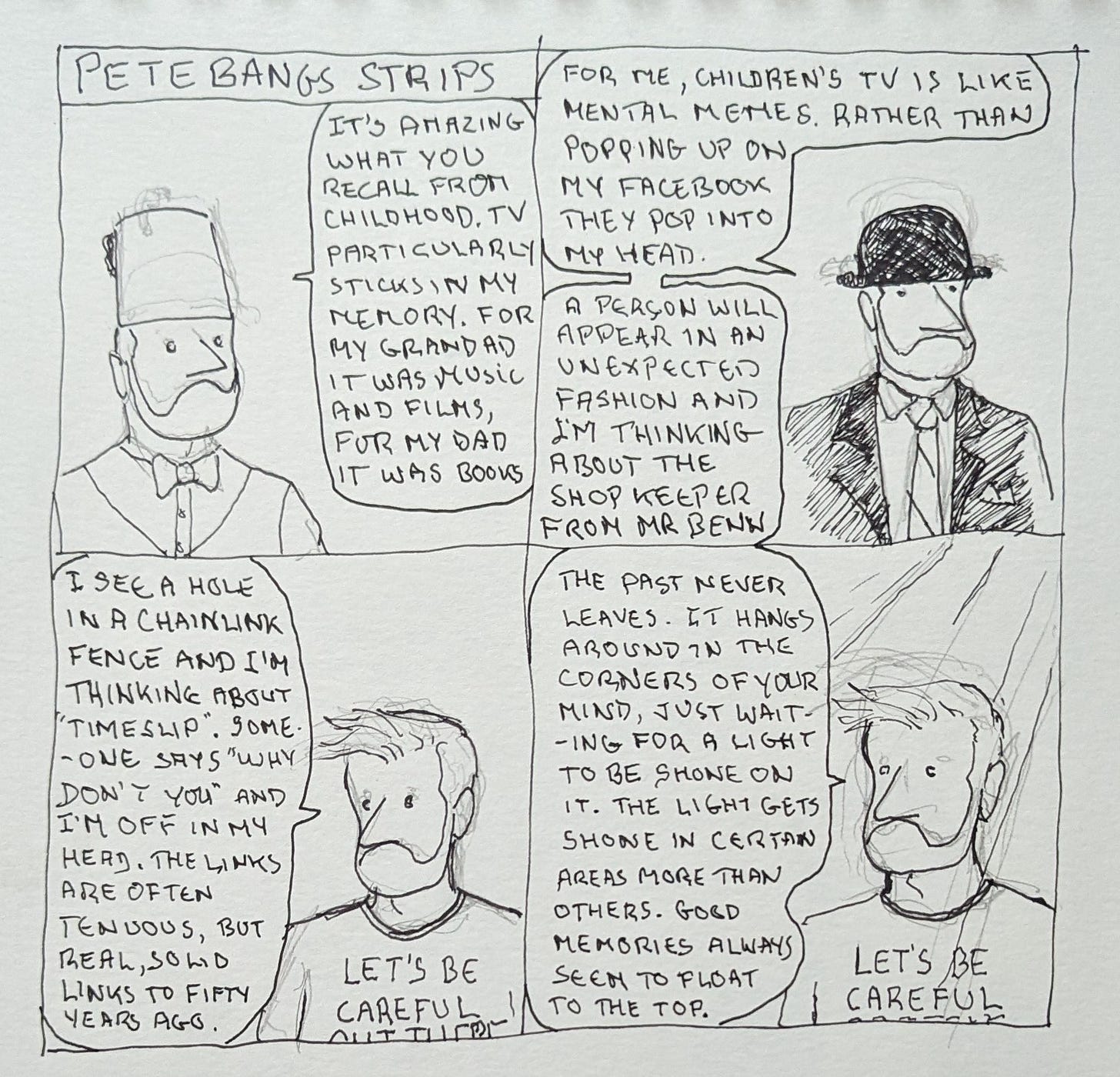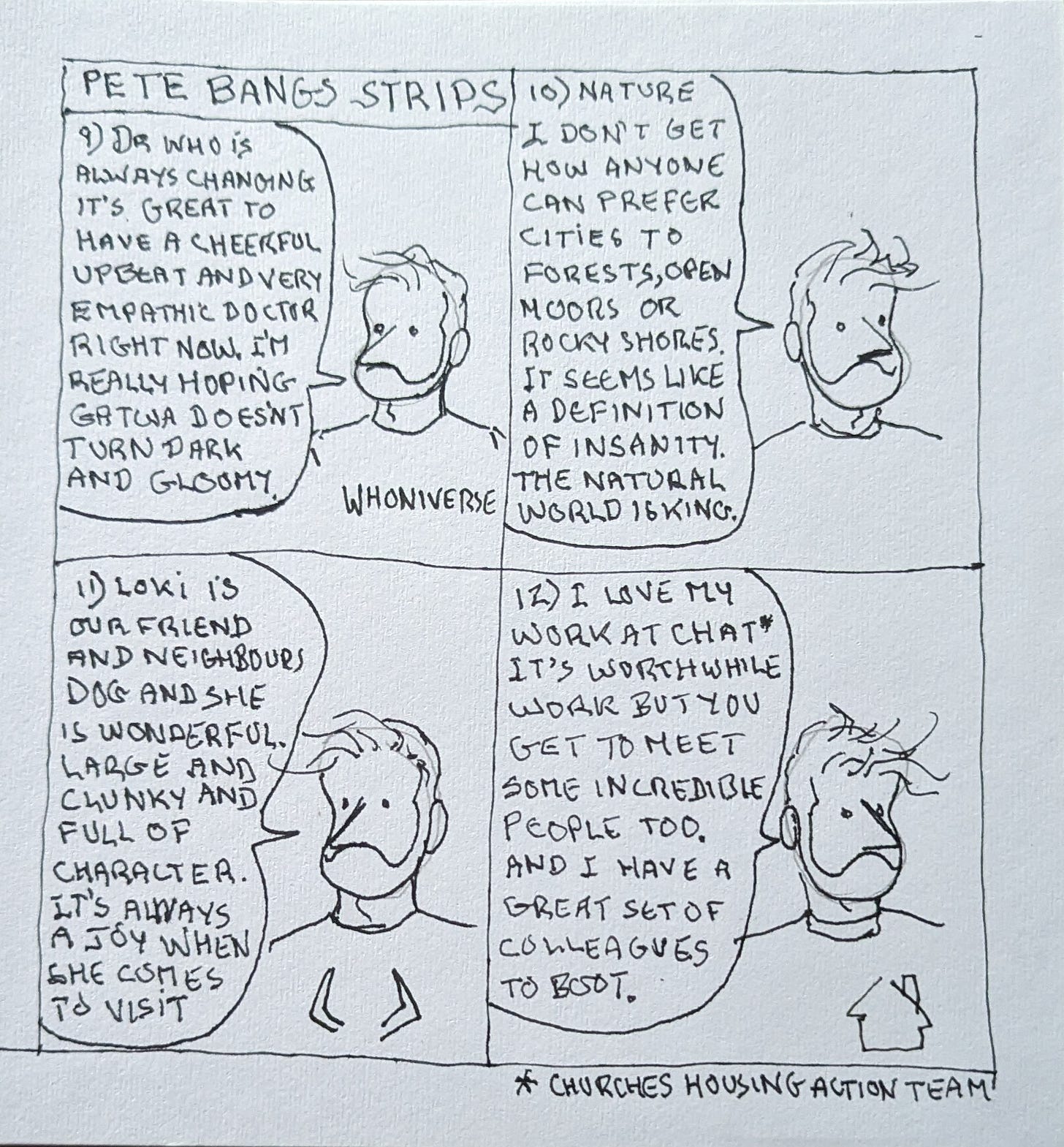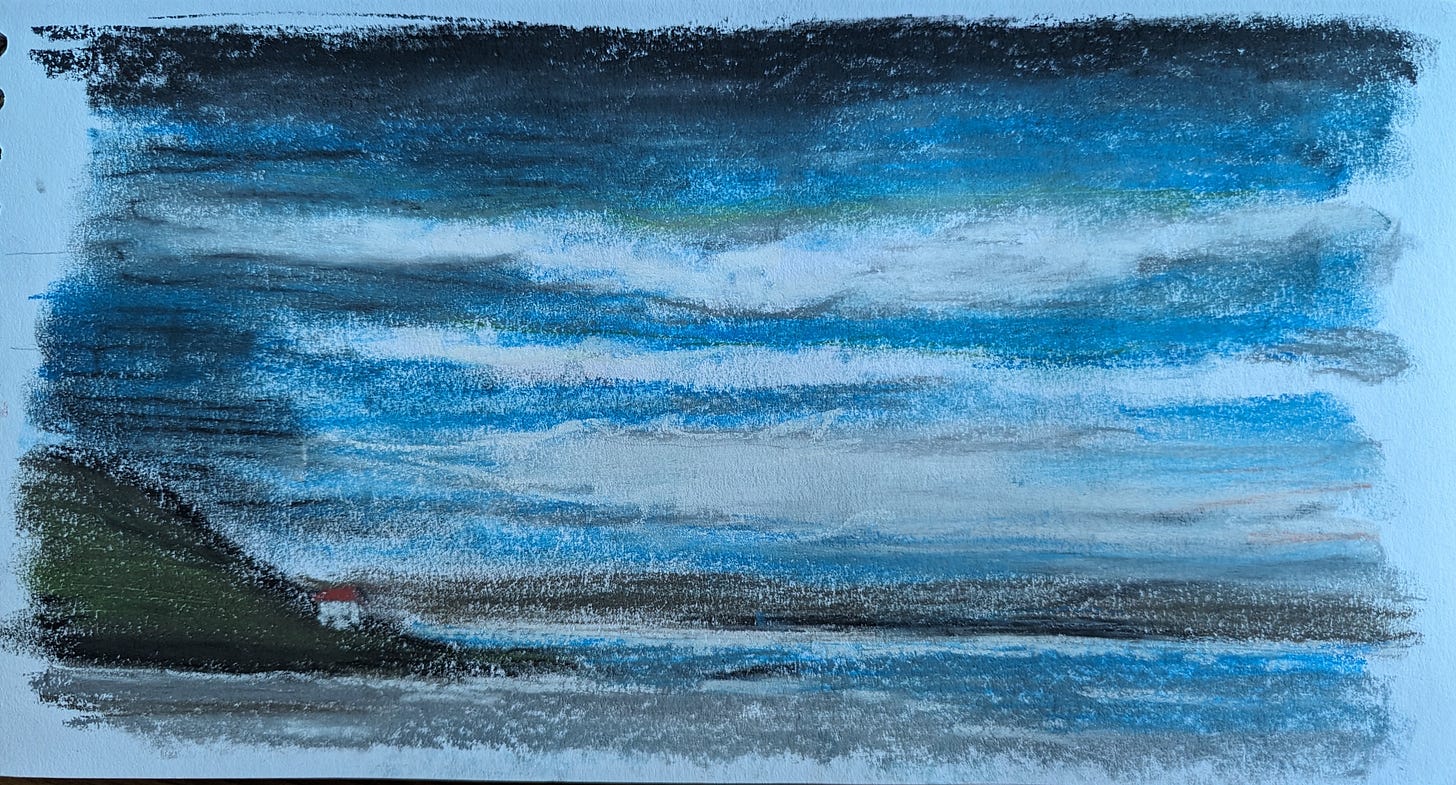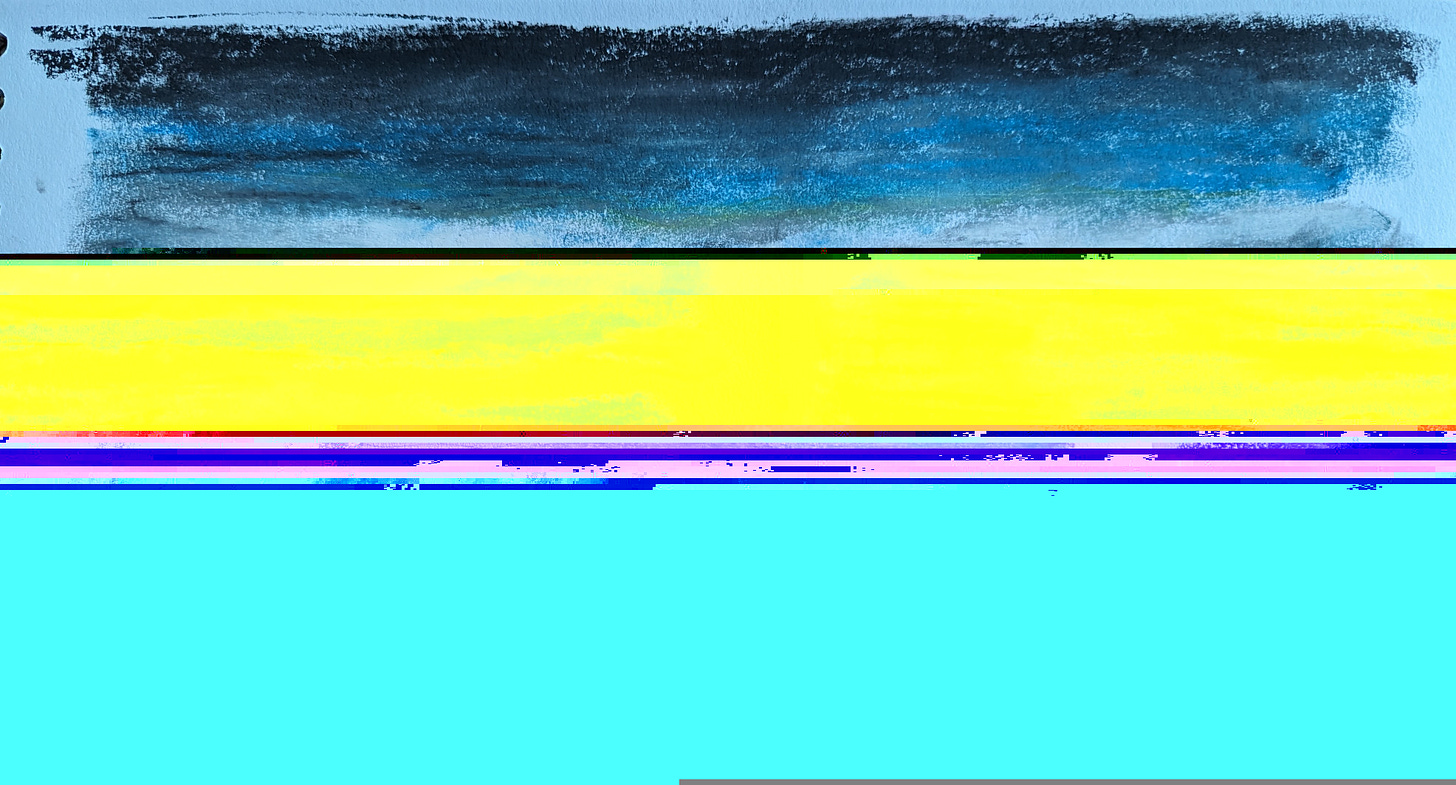Building style
Or the value of simplicity
Apologies for my prolonged absence. The essential tremor which was making drawing, typing and occasionally eating incredibly difficult is coming under control thanks to beta blockers and I've been focused on rebuilding the drawing muscles.
Anyway. Welcome if you're new here and thank you for joining us. And if you've been here before, welcome back, it's nice to see you again.
Right. Settle in and get comfy. This could be a long one.
I've always favored black and white drawing, pen and ink, probably due to cartooning being my first exposure to any form of art.
When the NHS were kind enough to come up with a way to control my worsening essential tremor, I became able to draw again after several months where it had felt virtually impossible. The thing with drawing is it's a muscle. If you don't use it, it deteriorates. I decided what I needed was an exercise to get my hand working in drawn lines again.
The thing with cartooning is that it's about creating an easily redrawable character. If you drew Snoopy and Charlie Brown as a realistic boy and dog, drawing them so they look the same in each three panels, day in, day out would be difficult and incredibly time consuming, and that's if you could do it successfully.
Cartooning aims to build characters from simple shapes. Take a look at Mickey Mouse here
You can see he's essentially built out of circles and tubes
Or Popeye, a little more complex but again built from shape, circles, tubes and ovals mainly.
It's a lot easier the draw a character built around circles etc. with that in mind I stole a structure from a strip called Ernie Pooks Comeek.Four panels, lots of text, very little in the way of wild variation in the drawings. With those simple rules in place I see to work. I decided to have the lead character be me and just have him ramble on about a subject over four squarish panels. The head is based on a butter bean shape, the body mainly tubes.
The bean was a popular basis for a character’s head in the first few decades of the twentieth century.its easy to reproduce but more expressive than a circle.
The aim wasn't to produce something polished, but rather something almost improvised. This would enable me to test the flow of my line work which was part of the point.
Early episodes the design was too uneven and leaning towards realistic but later on began to capture the simplicity I was aiming for. I produced over 40 of these little cartoons, eventually named Pete Bangs Strips and there's an evolution to the look of the mane character. The number of lines used become fewer and fewer and the result more and more stable.
Early on it didn't quite work. There were too many lines and the characters looked to different from panel to panel.
Moving on a handful and the character is becoming more easily redrawable but still looks closer to realistic than cartooned. Something is still missing.
Eventually things get more standardized. Bean shaped head, pointy nose, eyes like dots, simple shapes and the slogan tee-shirts. There's lots of text around the character and very little else. The rules have been established.
After a while working within the rules it became time to stretch past them, maybe break them.
This one made mention of Mr Benn so I decided to dress the character accordingly. Once you understand the rules of what you are doing, then you can look at breaking them. The rules might be self imposed like these or imposed externally such as recognized techniques but it helps to know them first.
As time went on the images became more and more simplified as I got my drawing muscles working better.
What has all this got to do with style you may ask? Well I'm starting to think that style, at least in part, comes from finding a way to efficiently create your work. It may be through a particular colour palette, an economy of line or a repetition of design elements
Having got comfortable again with my drawing I was able to branch out again. Feeling more confident, I had a go at some pastels.
What has this got to do with style, you may rightly ask. Well, the one thing Peter Bangs Strips taught me, apart from the fact I have an opinion on just about everything, is that a lot of stylistic elements come from need and repetition.
Cartoonists work in simple shapes to ensure they can repeat them on a regular basis. Monet’s style, particularly in his water lily paintings, was as much down to his failing eyesight as being part of the impressionist movement. Andy Warhol’s whole career was built on creating things in a simple style that could be repeated. It can be as simple as a particular brush stroke. The way Chinese calligraphers hold their brushes is intended to provide maximum fluidity of line for a minimal physical effort. Repetition helps create style as does financial necessity. If you have to draw Snoopy 3 times a day for 360 days a year you look for simplicity and short cuts, style develops.
Personally, I'm in favour of being flexible in approach. How you draw or paint something should be in answer to the needs and demands of the subject. Style, to my mind is ephemeral. Create enough though and personality shines through.
Thanks for joining me and letting me ramble. Feel free to share your thoughts, I'd love to hear them.
Until next time…
Go create something


